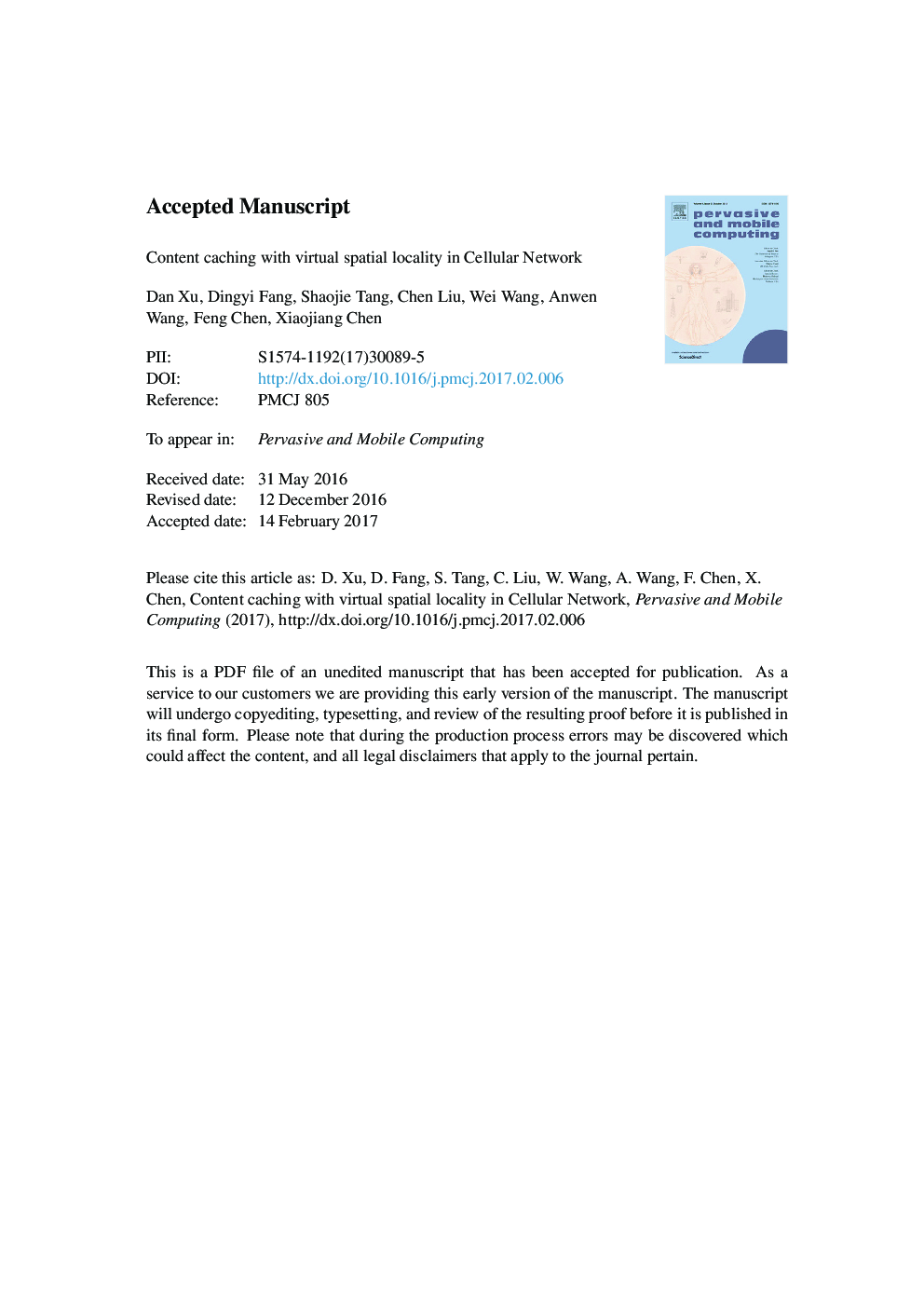| Article ID | Journal | Published Year | Pages | File Type |
|---|---|---|---|---|
| 4957379 | Pervasive and Mobile Computing | 2017 | 33 Pages |
Abstract
Content caching is emerging as a vital mechanism of Wireless Cellular Network. It could reduce the content transmission distance and balance the network load efficiently. Current content caching systems have exploited the content popularity with temporal locality and users' interests to solving the major questions: when and what to cache? But cannot point out where to cache. Past proposals for addressing these problems rely on online web caching and distributed storage systems, these works focus on wired networks or wireless networks that handsets (also called users) are independent and hence perform inefficiently when faced with complicated correlation in the practical social network, where the request probabilities of the handsets are easily affected by the others. In this paper, we introduce a wireless network content caching algorithm called PreCache that consider the social influence on users' content requests. Our design exploit social correlation to content popularity, the intuition underlying our design is that the content request probability of handset could be affected by others handsets' action in a same social network, and thus the content popularity exhibits a feature of spatial locality in the social network, we called the feature as virtual spatial locality. We adopt virtual spatial locality of content popularity for the change of content request probability by using a social influence model. We then design the heuristic algorithm PreCache for the selection of base stations, in which the contents are cached. We evaluate the performance of the PreCache in different network setups. The results show that PreCache could improve the successful content request ratio up to 90%, and gain an average of 2 hop count reduction compared with ProbCache and Random Caching.
Keywords
Related Topics
Physical Sciences and Engineering
Computer Science
Computer Networks and Communications
Authors
Dan Xu, Dingyi Fang, Shaojie Tang, Chen Liu, Wei Wang, Anwen Wang, Feng Chen, Xiaojiang Chen,
